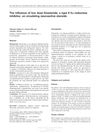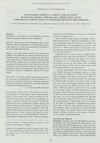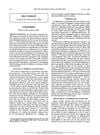TLDR Testosterone increases 3α-androstanediol levels, which can be blocked by finasteride.
The study developed a high-performance liquid chromatography–tandem mass spectrometry (LC–MS–MS) method to measure the androgenic neurosteroid 3α-androstanediol in rat plasma, demonstrating excellent linearity, specificity, sensitivity, and reproducibility. The method showed a sensitivity of <10 ng/ml and a detection limit of 2 ng/ml. It was used to analyze testosterone-induced increases in plasma 3α-androstanediol levels, revealing that testosterone elevates 3α-androstanediol levels in a dose-dependent manner, which was inhibited by the 5α-reductase inhibitor finasteride. This indicated that 3α-androstanediol is synthesized from testosterone via a 5α-reductase pathway. The study also suggested the potential role of 3α-androstanediol in modulating GABAA receptor activity and its implications for seizure control, although the assay faced limitations in analyzing physiological concentrations.
180 citations
,
June 2004 in “Journal of Pharmacology and Experimental Therapeutics” Progesterone's seizure-reducing effects are mainly due to allopregnanolone, not progesterone receptors.
136 citations
,
January 2004 in “Neuroscience” Testosterone increases seizure risk through its conversion to specific neurosteroids.
269 citations
,
May 2002 in “Journal of Neuroscience” Stress increases neurosteroids that help prevent seizures.
115 citations
,
March 2001 in “Baillière's best practice and research in clinical endocrinology and metabolism/Baillière's best practice & research. Clinical endocrinology & metabolism” Key enzymes control androgen levels, affecting hormone activity and potential treatments.
48 citations
,
February 1999 in “PubMed” Finasteride, a drug, can block the seizure-preventing effects of a hormone called progesterone in mice.
 98 citations
,
April 1997 in “The Journal of Steroid Biochemistry and Molecular Biology”
98 citations
,
April 1997 in “The Journal of Steroid Biochemistry and Molecular Biology” Finasteride effectively blocks rat enzymes, but with varying methods and strength.
 2 citations
,
September 2009 in “Hormone Molecular Biology and Clinical Investigation”
2 citations
,
September 2009 in “Hormone Molecular Biology and Clinical Investigation” Low dose finasteride decreases certain steroids, possibly increasing depression risk.
August 2008 in “European Neuropsychopharmacology”  137 citations
,
March 2006 in “Cns Drug Reviews”
137 citations
,
March 2006 in “Cns Drug Reviews” Finasteride treats enlarged prostate and hair loss, but may cause side effects in some patients.
Finasteride, a medication, is being re-evaluated for its effects and uses.
136 citations
,
January 2004 in “Neuroscience” Testosterone increases seizure risk through its conversion to specific neurosteroids.
 3 citations
,
October 1995 in “International Journal of Dermatology”
3 citations
,
October 1995 in “International Journal of Dermatology” Finasteride helps treat skin issues like acne and baldness by blocking testosterone conversion.
 187 citations
,
January 1994 in “The New England Journal of Medicine”
187 citations
,
January 1994 in “The New England Journal of Medicine” Finasteride treats enlarged prostate and may help with baldness, but effects on sexual function and male fetuses are unclear.




